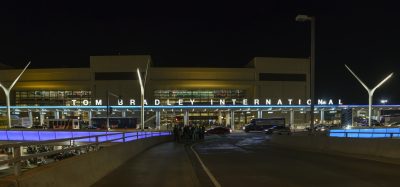Granny is Back! Security Culture: Collaborate, integrate and communicate
- Like
- Digg
- Del
- Tumblr
- VKontakte
- Buffer
- Love This
- Odnoklassniki
- Meneame
- Blogger
- Amazon
- Yahoo Mail
- Gmail
- AOL
- Newsvine
- HackerNews
- Evernote
- MySpace
- Mail.ru
- Viadeo
- Line
- Comments
- Yummly
- SMS
- Viber
- Telegram
- Subscribe
- Skype
- Facebook Messenger
- Kakao
- LiveJournal
- Yammer
- Edgar
- Fintel
- Mix
- Instapaper
- Copy Link
Posted: 15 November 2016 | Neville Hay, Avsec PM, MSyl, Retired Special Branch Detective Sergeant | No comments yet
Neville Hay, Aviation Security Expert, shares his insight into the pressing need for collaboration and communication within the industry…


Since the landside attacks of Brussels and Ataturk Airports the question I have asked myself is: “What is the outcome from a global perspective?” with respect to finding evidence that airports around the world are changing the way they look at security.
The industry has been a reactive industry. More recently the focus has been on smarter security with a greater use of technology. From my own observation and point of view the creeping introduction of looking at security from a holistic approach is where we will benefit more and the move towards risk based proactive security that is able to adapt to the ever changing landscape.
We have heard about security by design, partnership working, sharing of information, behaviour detection, reducing queues, body scanners, facial recognition and security management systems. All excellent systems and approaches.
More recently the focus has been on smarter security with a greater use of technology.
I raise this question because there is a need to change, a need to work together to form partnerships, a willingness to change and perhaps this is one of the greatest challenges of all: the willingness and acceptance that as individuals we may think we know best but unless we remove our blinkers, open our minds and look laterally with a willingness to adapt and change the way we do things, there will not be change.
What Granny would say?
When the facts are presented it is easy to hear my Granny say, “Why not? it is plain to see”.
Change will only occur when one is mindful of the environment and how vulnerable it is. Understanding the threat and how it manifests itself, identifying, disrupting, detecting by protecting, prevention and preparing the environment. Forced change or the consideration to change is brought about by the tragic events that have taken place and these serve as the indicator, a reminder and an example of clear evidence that should make individuals sit up and take notice.
Cost?
The other challenge is cost. As with all procedures and processes, cost will be a factor and when one includes probability alongside risk it will be the cost that points towards the outcome. Cost is our own internal threat, our risk and our vulnerability. The insurance industry can help and should be encouraged to reduce insurance fees where there is evidence of an entity employing various recognised security processes and procedures to reduce the risk thereby encouraging change and benefits to the industry and not costs to the passenger.
Policing
The next challenge is ensuring the bar is truly raised, supported and policed. Regulators, departments, organisations, associations and authorities must work together, be it locally or globally, to serve the industry with a balanced, fair but firm outcome. Even more so locally, as it reproduces its consequences on a global scale. Professionals must not falter in their duty and should not be subject to pressures from other agencies or dictated to by position, status or one’s customs or culture, it is a two-way process in terms of key stake holders and the only way this will work effectively and efficiently is by working together as a team. We have all witnessed on occasion the reluctance to share or work together be it within our own internal or external departments or stakeholders.
Marriage and partnerships
Forming that trusted partnership where every entity works in harmony with the other. However, like all marriages and partnerships there will be the odd falling out, dispute or argument, normally over money, children, in-laws or time spent at work. Being mindful of one other’s challenges, only then will we start to appreciate, understand and assist each other. If we do not do this, we will continue to operate in silos, have our marriage disputes and work against each other and like some marriages, fall apart and end in divorce.
A security culture is born out of joint working, looking at security from a holistic approach, how we can pool our resources, involving and including the airport community, investing in the human factor combined with technology. I recently watched the Film SULLY, the message of the human factor is a strong reminder that although technology will assist the industry, knowledge gained from experience plays an essential part. The human factor.
Technology, Collaboration and Communication
Technology will assist integrating agencies, security awareness throughout the environment involving the airport community something I have spoken about on various occasions. This is more important now than ever before. A small investment in technology that will involve the community and a security awareness programme based on best practise such as that which Interport police is developing will assist the industry. Combining this with Security Management Systems is a powerful tool for making best use of the resources available and assisting to install a security culture throughout the airport by involving the community. Collaboration, integration and communication will enhance the ability of the airport to protect, prevent, prepare and react in a time of crisis can only be achieved by working together.
The changing tactics of terrorism and organised crime continue to affect our societies and community. The key here is to understand that the community has a part to play. Terrorist and criminals live in our communities. They will research, plan and reach out to others for information making use of the insider who can provide the opportunity to exploit security, facilitating access or information. We must reduce this risk by making it more difficult for terrorist and criminals to operate.
Intelligence from information is a valuable tool. By harvesting information we can allow for early interdiction, preparation, protection and preparation of the environment and the community. It will build on the technology and use of technology to share information, it will allow easy access to report concerns or observations.
If we take the above and introduce into Security Management Systems (SeMS), it can be seen that communication and collaboration forms bonds within the system. Using the holistic approach, and operational practises including security by design and the use of technology, understanding how technology integrates and how it can enhance the work of others within the airport family, PNR, API, CCTV, analytics, facial recognition, behaviour detection, screening, joint operations, joint training, involving the airport community will build the team and security culture.
It is not about trying to reinvent the wheel it is more about:
- Partnerships working
- Encouragement
- Empowerment
- Enabling
- Supporting
- Awareness
- Effectiveness
- Efficiency
By including all of the above into security culture through a security management system looking at security with a holistic approach that emphasises teamwork, collaboration, integration, communication and community engagement, we can create a flexible, fluid workforce all engaged in the common theme of attempting to reduce the risk and keeping our airport, airlines, passengers and staff safe, be it on a local or global level.

















